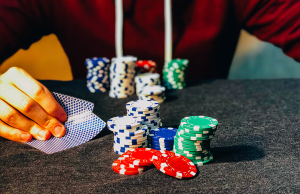A coworker surprises the team with a box of doughnuts, each covered in sugary icing, sprinkles, and candies and filled with jelly, chocolate or pudding. A birthday party is never complete until a cake is presented with layers of sugary frosting at least two inches thick. The child having a tantrum in the store can easily be pacified with the promise of a piece of candy or a cookie.
Many of us love to indulge in sugary goodness—as is demonstrated in the examples above—but is there a danger of becoming addicted? Sugar addiction begins when you crave anything that contains the sweetness of this ingredient, and it has a powerful impact on the reward centers of the brain. When you eat foods that contain a lot of sugar, a large amount of dopamine is released in an area of the brain called the Nucleus Accumbens. When sugary foods are eaten often and in large amounts, the dopamine receptors begin to “down-regulate,” and there are fewer receptors for the dopamine. What this means is the next time these foods are eaten, their effect is weakened. More junk food is needed the next time you eat in order to reach the same level of reward.
Due to its powerful effect on the reward centers of the brain, sugar functions similarly to drugs of abuse, such as cocaine and nicotine. The same brain centers are at play. In addition, individuals with a predisposition to addiction can become “hooked” on sugary foods and lose control over their consumption. In a nutshell, sugar “hijacks” brain chemistry to cause cravings and a necessity to eat more of it.
Signs of Sugar Addiction
When eaten in moderation, sugar is essential to the body. As a carbohydrate, it helps with the energy needed for daily activities. However, if sugar is eaten in excess it can have negative effects on one’s health. To find out if your sugar intake is on the border of addiction, read the warning signs below:
1) Eating more sugary foods than originally intended. A person plans to eat one chocolate bar (or another sugar-filled favorite). After the first piece is finished, they want more. Pretty soon, they have eaten several chocolate bars and still crave more. Similar to a morning-after hangover, the individual starts to feel regretful afterward.
2) Craving meat or salty foods. A healthy body strives for balance, and too much expanding food creates a craving for contracting food and vice versa. Simply put, if you eat too many sweets, you’ll crave meat or salty foods to get back in balance. This can serve as a sign that your body is looking for balance because it’s taking in too much sugar.
3) Eating sugary foods without really wanting to. You might see a candy bar and not really want it. But after about 10 minutes, that candy bar is all you can think about. You know it’s not a good idea to eat it, but you rationalize why it’s okay to indulge: you ate a lot of greens today or you’ll skip dessert the rest of the week. The result? You eat the candy bar, promising you’ll only do it this once.
4) Feeling sick after eating sugary foods. If you experience headache, bloating, fuzzy thinking, fatigue, or sleepiness, after eating too much of your favorite sweet, you’re in the midst of a sugar hangover. Sugar addicts might do this a few times a week, or every day. And they don’t change their habits even when they realize that these negative effects are direct results of their sugar consumption. The short-term benefits are worth it to them.
What Are the Dangers of Eating Too Much Sugar?
Too much sugar intake can lead to serious health risks. These hazards are split into four categories: increased risk of diseases and sicknesses, nutrient imbalance or deficiency, bodily impairments, and behavioral changes. Let’s delve into these below:
Increased Risk of Diseases:
- Obesity
- Headaches and migraines
- Reactive hypoglycemia
- Kidney stones and gallstones
- Food allergies
- Gastrointestinal problems
- Cataracts and nearsightedness
Nutrient Imbalance or Deficiency
- Lowers vitamin E levels
- Hurts cholesterol levels
- Interferes with absorption of calcium and protein
- Upsets mineral relationships in the body
Bodily Impairments
- Skin aging
- Hormonal imbalance
- Brittle tendons
- Increase in fluid retention
- Suppression of immune system
Behavioral Changes
- Increased risk of depression
- Rise in anxiety
- Difficulty concentrating
- Difficulty sleeping
- Drowsiness
How to Curb Your Sugar Addiction: 4 Tips
Moderation is important where sugar is concerned. While this may be easier said than done because of the countless options of sugary foods in stores—energy drinks, sodas, candy bars, and more—it can be done. The following steps will help you curb those sugar cravings and eat sweets in moderation:
- Find out why you have a craving for that chocolate bar and if it is really to enjoy just one piece. If it is because a coworker snapped at you or you had an argument with a partner, maybe the craving is to soothe those feelings. Instead of indulging in the candy, step away from the situation and go for a 10-minute walk.
- Start adding sweet vegetables, such as yams, sweet potatoes and carrots, to your diet. The addition of these vegetables will help curb cravings because of their natural sugar.
- Have fresh fruit ready when it is time to combat the sweet cravings. Keep trail mix and apples available in the glove compartment of the car or in a handbag, opting for them instead of stopping at a convenience store to get a quick fix of sugar.
- Try not to keep sugary foods in the house. At restaurants, order only one dessert and enjoy it—the act of eating dessert in public creates accountability.
*Editor’s Note: While colloquially and culturally, an “addiction to sugar” is used to describe the behaviors and experienced in this article, strictly and clinically speaking, cravings and overconsumption of sugary foods, while they may be a health risk, are better described as habits, or a bad habit, as sugar cravings usually don’t meet the necessary criteria for a clinical diagnosis of addiction.












